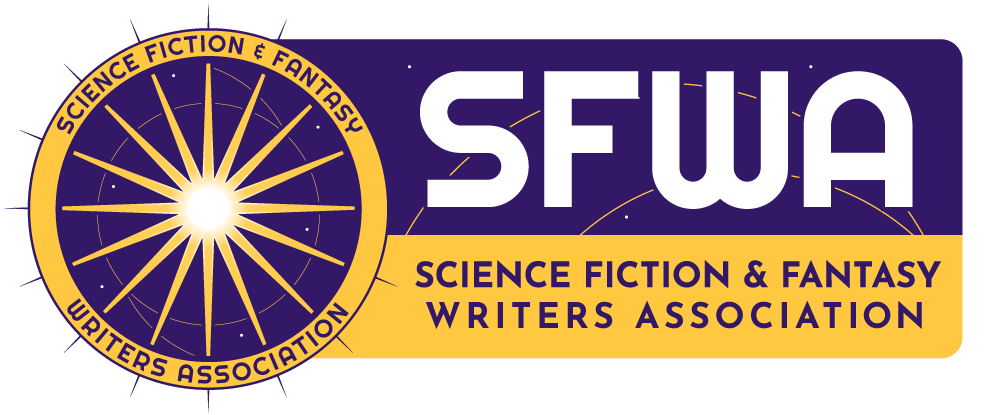Why Crowdfund?
by Madeleine Holly-Rosing
Though crowdfunding may seem intimidating to the first-timer, it is a viable alternative to direct sales, increasing your fanbase and sharing something unique to the world: your story. In this article, I will highlight some key elements of a successful campaign.
What is crowdfunding? In short, it’s presenting your creative project to the world and asking for monetary help to produce said project. Possible asks include funds to produce your book cover, pay for editing, and add a deluxe foil cover version with sprayed pattern edges. Those who “pledge” or “back” your project select a “reward” to receive when you have completed the project. (Note: I do not use the term “invest” as it concerns equity-based crowdfunding, which I will not cover here.)
Choosing Your Platform
Crowdfunding platforms have sprouted up like weeds over the past decade, and I won’t list all of them here; however, Unbound and Publishizer specialize in authors, and I know many who like Indiegogo and Crowdfunder. I have been successful with Kickstarter and have remained with them for the following reasons:
- The largest and most successful platform.
- A dedicated community of backers.
- Informative guides for creators.
- Easy to use post-campaign surveys.
- Optional Pledge Manager for post-campaign fulfillment.
Whatever platform you choose, make sure it has the features that matter the most to you.
Social Media
Whether you like it or not, you must have some sort of social media presence. However, being productive on every social media site can be overwhelming. I suggest having an account on at least two and focusing your growth on those. I have not paid for advertising yet on any of them and primarily use organic algorithms, but that is becoming problematic. I’ve had dwindling returns on all platforms over the past three years, especially X. But being a creator means putting yourself out there.
Newsletter Email Lists
If you don’t already have a newsletter email list, it’s time to start. Email lists are a critical component of running a successful campaign. Before you launch, you should be confident that you will have enough people on your list to fund at least 35% of your campaign in the first three days. Without that, making your funding goal will be much harder.
If you’re starting from scratch, there are various ways to build your email list:
- Have a table at a local library/festival/convention and put a signup sheet on your table.
- Post requests on social media for people to sign up for your newsletter. Offer a free story as an incentive.
- Join viral email builders. The cost varies.
- Add opt-ins at checkout on your webstore/website.
Working with Other Creators
Other creators running a campaign are not your competitors; they are your colleagues. You know the saying, “A rising tide raises all ships?” That’s how it works in crowdfunding.
Cross-promoting with other creators will bring in potential backers who otherwise may not have seen your campaign. It’s a pretty simple concept. Whenever you post an update, you mention the other creator’s campaign. I normally include the copy, an image from their campaign, and the link. I rarely post more than two at a time for greater impact.
I also follow other creators on social media and Kickstarter, especially those in my genre and medium. Make friends and be helpful. It will go a long way.
Creating Your Homepage
A crowdfunding homepage is a description of your project and an introduction to who you are. Think of it as a grant proposal. Here is a breakdown of what you need to include:
- What is your story in one sentence?
- What is your call to action?
- Tell us a little about yourself and expand on the project.
- Tell us about your characters and your story.
- Why this story?
- Reward tiers.
- Biographies of you and your team, if you have one.
- Testimonials and any awards.
- Stretch goals.
- Risks and challenges.
Remember, a Kickstarter homepage needs to have a balance of text and images.
Video
Keep it simple. Introduce yourself, then tell us about your project. You can record on your phone, though I recommend including a short, animated section describing your story. It should be no more than three minutes long.
Funding Goal
Your funding goal should include not only the cost of what the purpose of the campaign is, but also the costs of production, shipping, Kickstarter fees (5%), and Stripe fees (3-5%). When starting, I’d suggest a simple project with a low funding goal (below $1,500) to familiarize yourself with the platform and how everything works.
Pre-Launch
Pre-launch is the most important part of your campaign other than your project. A campaign can be a second full-time job, which means you need to psychologically prepare for it and mind your mental and physical health. Prep food ahead of time, refill your meds, exercise, and get plenty of sleep.
At least two months before you launch, schedule interviews with podcasters, draft press releases, reach out to other creators to cross-promote, produce your video, prep your homepage, organize your email list(s), and prep your Kickstarter Launch page. This handy tool allows you to promote before you launch.
The Campaign
During your campaign, announce the launch through your email list and social media. Post updates whenever anything significant happens (e.g., halfway there, a new reward tier, an interview), usually twice a week. Email press releases to relevant sites. And when you get a pledge, message the backer saying thank you.
Case Studies
Be sure to study campaigns that are similar to yours. Examine their video, how they organize their page and rewards, and updates.
I strongly recommend diving deeper into the how-tos and backing a few campaigns before you launch. Knowing what you like and don’t like about how someone else runs a campaign will teach you a lot.
Check out the examples below and any others you run across for ideas and inspiration.
Under $2000
- Before Crown and Kingdom – http://kck.st/3Q3MJGa
- Revenge is a Dish Best Served Twice – http://kck.st/3W6X8Ew
- A Petrified Heart – http://kck.st/3WAKvBN
- Plague of Demons – http://kck.st/42FfYGM
Over $2000
- Bastion: Deluxe Hardcover Edition – http://kck.st/4hoJrZS
- Honeysuckles & Snapdragons – http://kck.st/4hn83CB
- Grimnir Chronicles – http://kck.st/4hKXtF1
Though crowdfunding can be scary, don’t let it keep you from giving it a try. It’s a marvelous opportunity to reach new fans, generate social proof, and add loyal advocates.
Explore more articles from THE COMICS PANEL
 Madeleine Holly-Rosing is the writer/creator of the steampunk supernatural graphic novel, prose, and audio drama series, Boston Metaphysical Society. Winner of the Sloan Fellowship for screenwriting, and the Gold Aurora and Bronze Telly for a PSA produced by Women In Film, she has also won numerous awards while completing the UCLA MFA Program in Screenwriting. Originally self-published, Source Point Press re-published the first six issues, the trade paperback of Boston Metaphysical Society and picked up the four sequels. She has run fifteen successful crowdfunding campaigns, guest lectured at UCLA Professional Programs, Dreamworks Animation, and Scriptwriter’s Network, as well as published the book Kickstarter for the Independent Creator.
Madeleine Holly-Rosing is the writer/creator of the steampunk supernatural graphic novel, prose, and audio drama series, Boston Metaphysical Society. Winner of the Sloan Fellowship for screenwriting, and the Gold Aurora and Bronze Telly for a PSA produced by Women In Film, she has also won numerous awards while completing the UCLA MFA Program in Screenwriting. Originally self-published, Source Point Press re-published the first six issues, the trade paperback of Boston Metaphysical Society and picked up the four sequels. She has run fifteen successful crowdfunding campaigns, guest lectured at UCLA Professional Programs, Dreamworks Animation, and Scriptwriter’s Network, as well as published the book Kickstarter for the Independent Creator.
The first novel in the series, Boston Metaphysical Society: A Storm of Secrets, was awarded a Silver Medal in the SciFi/Fantasy category as well as The Write Companion Award for Best Overall TOP PICK – Adult, Children’s and Young Adult categories in the 2019 Feathered Quill Book Awards.
Madeleine is currently producing the next series in the Boston Metaphysical Society saga, writing a series for Joe Benitez’s, Lady Mechanika, and her new graphic novel series, Morgana Pendragon.



